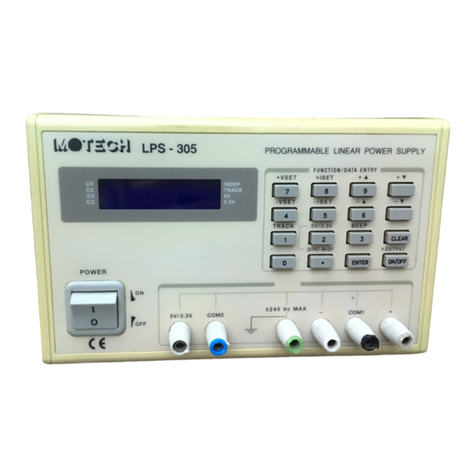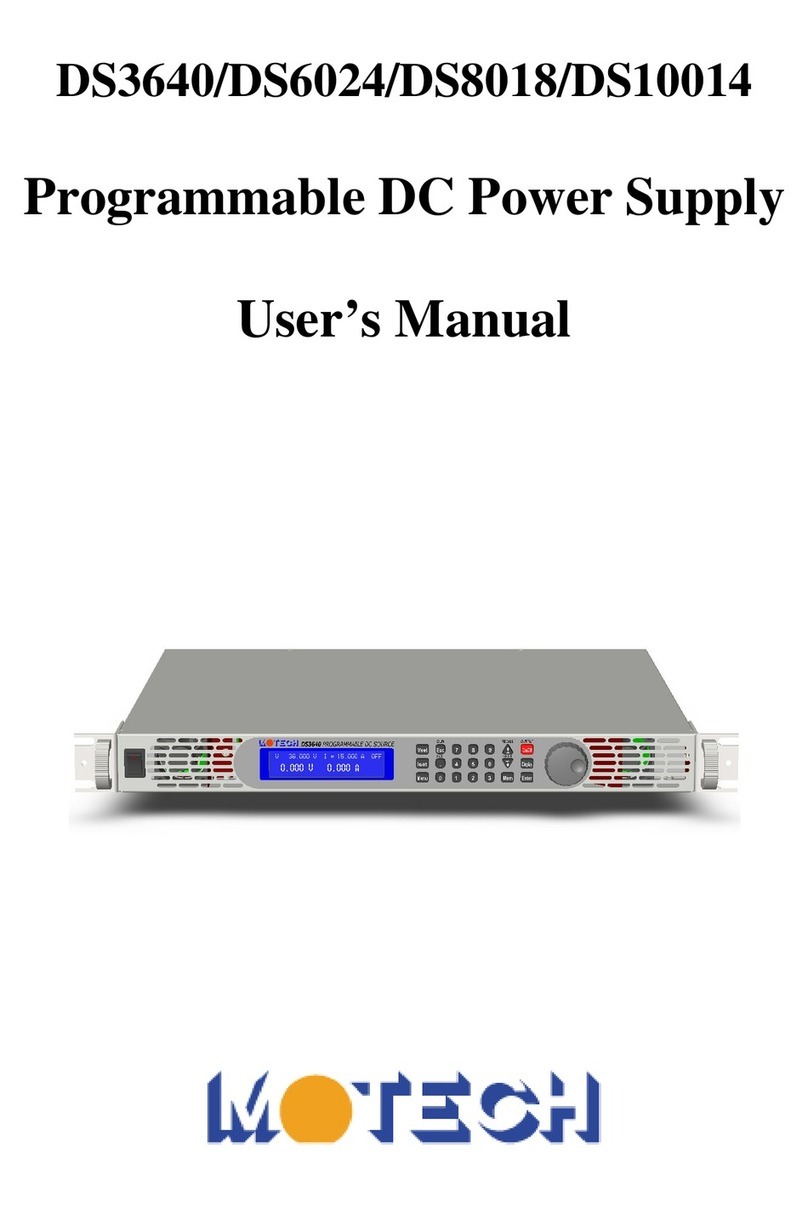2
Power Ranges : 0 ~ 96W (CH1&CH2) / 0 ~ 30W (CH3)
The maximum output current of channel 3 basically depends on the output
voltage setting and the maximum output power of 30 watts. However, it is limited
to 5A maximum. For example, if the output voltage of the channel 3 is set to 15V,
then the maximum output current is 2A. If the output voltage is set to 6V, then
the output current could be up to 5A. However, if the output voltage is set to 3V,
the output current will still keep within 5A because of the maximum output
current limit.
2. Digital rotary, number key, function key setting:
The rotary can be used to change the output voltage rapidly. Simulate the surge
of the voltage output. It provides the solution for the trigger circuit testing. User
can set up output voltage by numeric keypads too. It differs from original VR
adjusting. Function keys provide users operation more friendly and easily.
3. Precious measurement on voltage & current:
In addition to the precise outputs, LPS 505N provides voltage and current
measurements (read back). Users can reduce the measurement equipment
budget and space.
4. Memory and timer function:
LPS 505N provides a memory space to store 100 settings that can be easily
recalled. This feature makes the restoration of the previous settings quickly and
friendly. The LPS 505N has two (2) timers with resolution of 1 second and 1
millisecond respectively. The timers are used to time the outputs. When the
timer counts down to zero the LPS 505N will automatically turn the output off.
This feature is useful when the LPS 505N is providing the power to the targets
in the burning room. Also it can be used to precisely control the output current
down to millisecond duties for electroplate applications.
5. OVP, OCP & lock protection function:
The over voltage protection (OVP) and over current protection (OCP) features
limit the maximum output current and voltage to avoid damages to the target
when doing experimentations in a laboratory. The key lock feature disables all
keys except the CLR key. It prevents the LPS 505N from the accidentally wrong
setting and then avoids the damages to the target.
6. Series, parallel mode:
In serial mode, CH1/CH2 can output maximum 64V with positive/negative
output. It can be used for OP circuit design. In parallel mode, CH1/CH2 can
output 6A maximum.
7. Dual tracking:





























